The Beginning Of The Ultimax 100 To The MK 9

The story begins in the late 1970s when one of the best-known firearm designers, Leroy Jim Sullivan, travels to Singapore to design a new assault rifle for CIS (Chartered Industries of Singapore), which changed its name to ST Kinetics and now ST Engineering. It was a three-year project to develop a new assault rifle, with primary requirements being controllability and accuracy in fully automatic firearms, because if it cannot hit its target in full-auto, it is essentially worthless. The design must also be rugged, simple, reliable, and accurate guiding principles. During development, this project evolved from creating an assault rifle to building a machine gun or automatic rifle instead - the Ultimax 100.
It was initially designed to fit the equipment CIS already had. The factory could make the M16 because Colt had previously set up a turnkey production line. Jim created a gun that could be built using what the factory already had.
The weapons development focused on two primary requirements: controllability and accuracy during full-auto fire. If the accurate part is missing, the rest is pointless. To address these needs, they implemented a method of recoil management. Recoil is defined as the force exerted over time. By extending the duration of this force, we can effectively reduce its intensity. This reduction in force significantly lessens the impact on the shooter.
Additionally, by timing each shot so that it is fired right after the recoil from the previous shot has been fully absorbed, we achieve a constant recoil force. As a result, the shooter experiences a much smoother and continuous action instead of a series of sharp impacts.
When fired, the bolt moves rearward after it unlocks. Traveling rearward under spring compression, it applies pressure against the rear of the stock and the shooter's shoulder. The bolt mass decelerates on the main spring. As the bolt runs out of energy, the spring's energy pushes it back into its original position. Therefore, the spring constantly exerts pressure backward against the shooter's shoulder. This results in a smooth and controllable weapon in full auto, achieving accurate automatic fire.
As the weapon evolved from an assault rifle into an automatic rifle, a quick-change barrel was not included in the original design. This decision was made to reduce weight, as a quick-change barrel can compromise accuracy - it results in a loose fit for the barrel, leading to issues such as heat expansion and negatively impacting the rifle's performance.
Jim Sullivan wanted to introduce an open bolt, closed bolt trigger mechanism. This innovation would have enhanced full automatic capability while ensuring the crucial accuracy requirement during semi-automatic operation with a closed bolt. However, this feature was not implemented.
The Ultimax 100 is an exceptional weapon designed to meet the needs of minimally trained conscript soldiers. It significantly reduces training time and requires no special skills or experience to handle effectively.
Fast-forward to the new Ultimax 100 Mk 9, which has evolved through various iterations. The most noticeable change is the addition of a dual feed capability, accepting both 5.56mm STANAG magazines and 5.56mm M27 ammunition belts. Like the original, the MK9 features constant recoil, enhancing controllability and enabling highly accurate suppressive fire while conserving ammunition. The Ultimax 100 Mk 9 also features a quick-change barrel for extended sustained firing.
The Ultimax 100 MK 9 is a lightweight light machine gun weighing just 13.2 lbs (6 kg). Its design optimizes mobility and firepower while maintaining an accuracy rate comparable to standard assault rifles. The weapon has a rate of fire between 400 and 600 rounds per minute, and features improved visibility thanks to its belt feed system, which can accommodate a 200-round ammunition box.
The Ultimax 100 MK 9 uses a short-stroke, gas-operated mechanism with a multi-lug rotating bolt that fires from an open bolt position. Its advanced constant-recoil mitigation system enhances accuracy, while the low felt recoil improves controllability, allowing for precise suppressive fire and efficient ammunition conservation.
After testing various models, I have become a fan of the Ultimax 100 series of weapons. While working with Singaporean soldiers, I had the opportunity to test their issued version, which was limited to 30-round magazines at the time, but it was still worth trying out. The Ultimax 100 is an impressive automatic rifle; however, it falls short as a light machine gun. The MK 9 may address these shortcomings by incorporating a belt feed feature to enhance the gun's suppressive capability. The MK 9 also includes modern ambidextrous controls, including an ambidextrous charging handle. It is one light machine gun that I look forward to testing if the opportunity arises. Until then, I will leave it at that.
Sources:
https://patents.google.com/patent/US4475438A/en
THE INTERVIEW: L. JAMES SULLIVAN - PART II 28 FEBRUARY, 2007 - Small Arms Review

Lynndon Schooler is an open-source weapons intelligence professional with a background as an infantryman in the US Army. His experience includes working as a gunsmith and production manager in firearm manufacturing, as well as serving as an armorer, consultant, and instructor in nonstandard weapons. His articles have been published in Small Arms Review and the Small Arms Defence Journal. https://www.instagram.com/lynndons
More by Lynndon Schooler
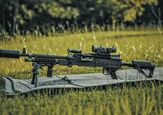

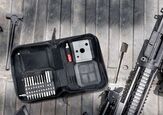






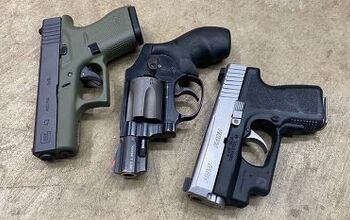

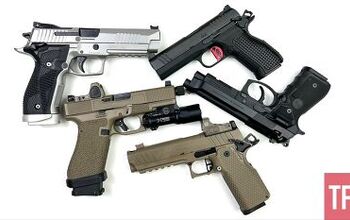
![[SHOT 2019] ST Engineering Ultimax 100 MK8](https://cdn-fastly.thefirearmblog.com/media/2024/05/19/14593072/shot-2019-st-engineering-ultimax-100-mk8.jpg?size=350x220)




![[SHOT 2025] Trijicon NEW Products For 2025](https://cdn-fastly.thefirearmblog.com/media/2025/01/22/01217/shot-2025-trijicon-new-products-for-2025.jpg?size=350x220)
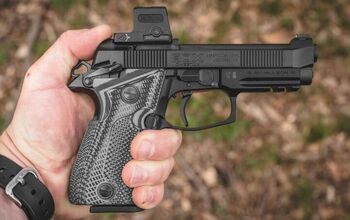



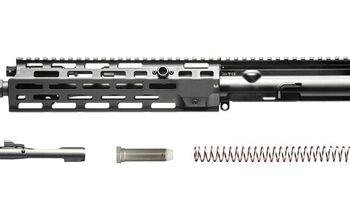

![[IDEX 2025] The Chinese Take On The SCAR - The NAR CS/LR17 Rifle](https://cdn-fastly.thefirearmblog.com/media/2025/03/02/12381/idex-2025-the-chinese-take-on-the-scar-the-nar-cs-lr17-rifle.jpg?size=350x220)

![[SHOT 2025] Prototype Firearms and Accessories of Strike Industries](https://cdn-fastly.thefirearmblog.com/media/2025/01/24/02151/shot-2025-prototype-firearms-and-accessories-of-strike-industries.jpg?size=350x220)
Comments
Join the conversation
Being interviewed by historian Edward Clinton Ezell, Eugene Stoner (show casing his Stoner 86 at ARES) stated the first time he and Jim Sullivan saw constant recoil was in the German MP44 (STG44). The old German designers knew about designing accurate full auto fire, one helped trained Stoner. Stoner also stated, no matter the different types of ammunition pressures being used (with in reason) like ball and tracer, the cycle rate remains the same. Why the US refuses to adopt such weapons and adopts inferior weapons such as the over gassed HK416 is beyond me. Sullivan's Ultimax was more accurate when tested against the FN 249 and the Ultimax didn't even have sights during the testing. The modified Stoner 86 LMAG (the Knights light assault machine gun) is a game changer (in 5.56 and 7.62) and yet, was never adopted.